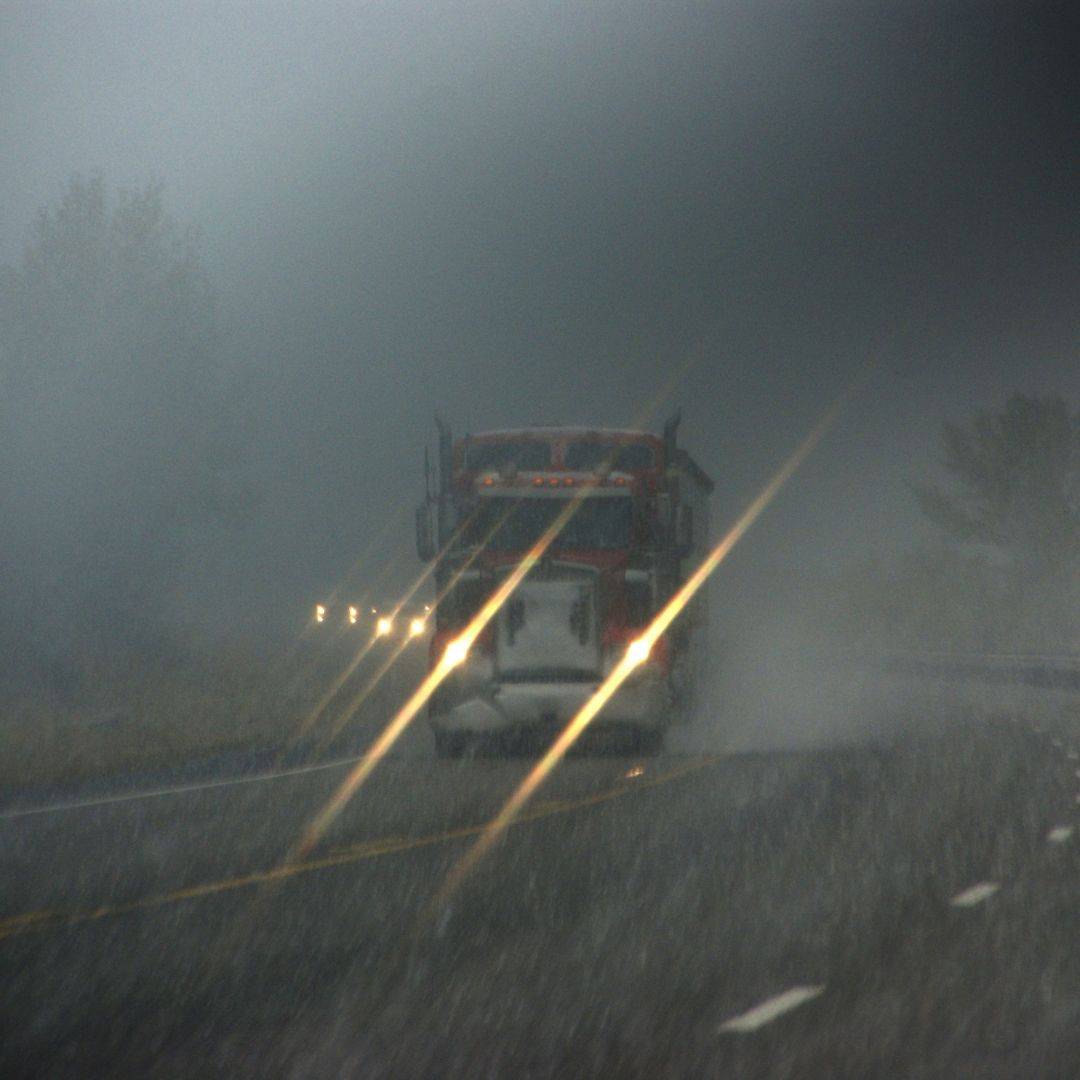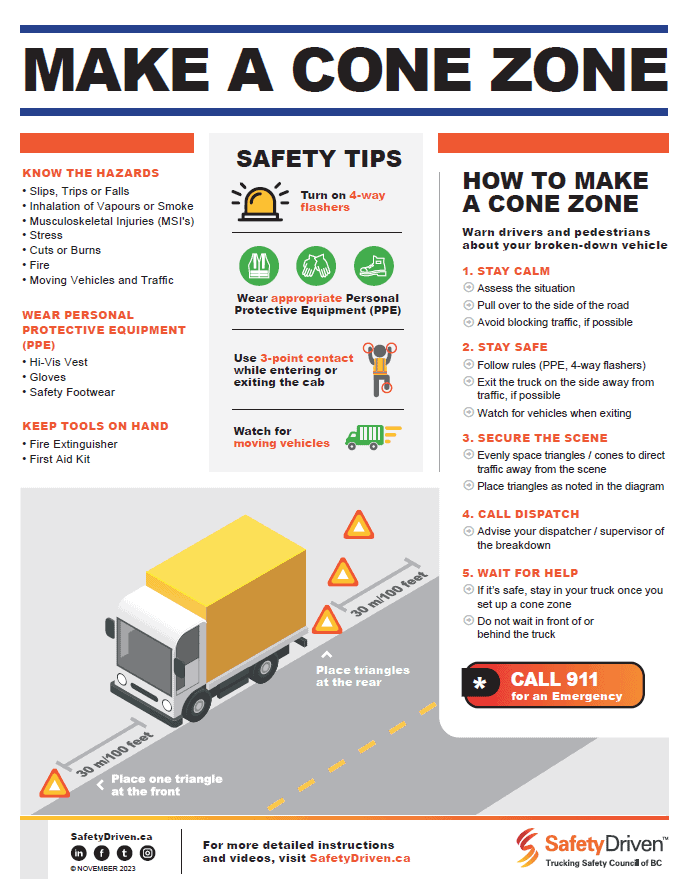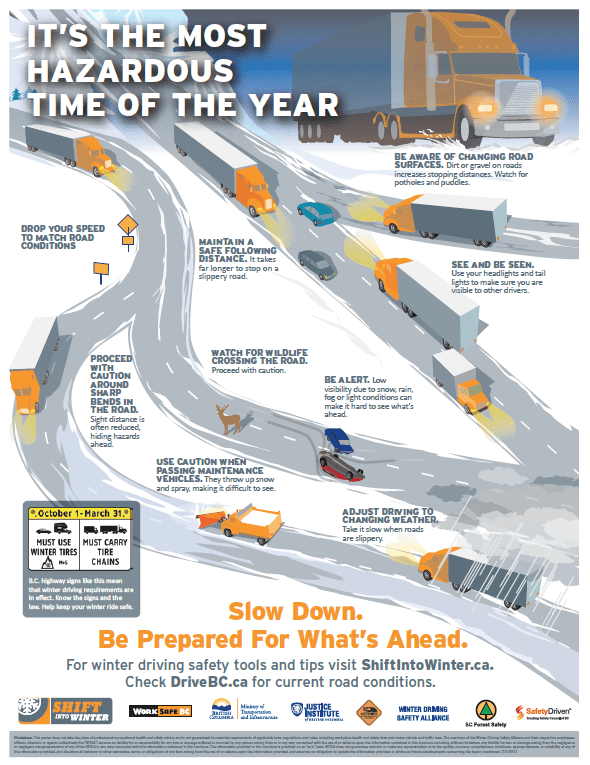
Adjust Your Driving for the Conditions
Sudden changes in weather conditions will definitely impact your day. As a professional driver, you know you need to be alert and stay informed about conditions along your route.
You expect the seasons to change, but it can take you by surprise when the weather seems to switch seasons without notice. To drive according to conditions, you need to be prepared as best as you can; check the weather reports along your route before you head out and again every few hours. Be prepared for inclement weather in all aspects, with the right mindset—able to adjust to the conditions as they change—and with the right gear in case you need to stop along the road.
• When things start to look dicey, minimize distractions. Turn off music and don’t talk on your phone. Try opening your window to listen for traffic you may not be able to see.
• In heavy rains or thick fog, slow down gradually as soon as you realize the weather is changing. Avoid braking suddenly. You can only respond to things you can see. If you’re driving too fast, you won’t know what you can’t see until you’re right on top of it. You should be able to see a minimum of 20 seconds ahead and you should be able to stop in half the distance you can see. If you have to drop your speed significantly to do that, the weather may be too poor for driving. If you need to stop, find a safe place to pull off the road completely. Keep your trailer lights on to help others spot you as you wait it out. If you have to leave your vehicle, be sure you are dressed for visibility and to stay warm and dry.
• In fog or rain, make sure you can see and be seen. Use your low beams or fog lights, not high beams. Low beams direct light onto the road, whereas high beams reflect light off the precipitation, impairing visibility. Inside your truck, avoid fogged windows by using the defroster and windshield wipers regularly. Keep your windshield washer reservoir full—you’ll need it if you encounter ice fog.
• Be aware that roads are most slippery when it begins to rain as surface oil and grease form a slick film that won’t be washed away for 20 or 30 minutes of hard rain. In mist or a light rain, that greasy slick won’t be washed away at all. If the temperature is close to freezing, remember that bridge decks freeze before road surfaces. Check road reports before you go.
• Read the road as you drive; watch for clues to what’s ahead, especially in unfamiliar territory or when visibility is poor. Even with reduced visibility in bad weather, you can use strategies to maximise the visibility you do have. Using lane markings and treelines can help you determine when the road begins to curve ahead or if it begins to drop down a hill. Use the fog line along the right edge of the road or roadside reflectors as a guide. Watch for slow-moving or stopped vehicles as an indication of trouble ahead. Check out SafetyDriven’s instruction on conducting road safety risk assessments.
Latest Resources
Make a Cone Zone
Dowload this poster for tips on how to make a safe cone zone.Winter Hazards Poster
Drivers need to recognize winter hazards. Share this poster to remind drivers how to ...

